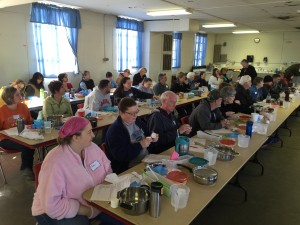It’s important for new beekeepers to understand the beekeeping cycle. This topic came about as I had been perusing a book on cattle and came across a paragraph on the subject of ‘the cattle cycle’. The book is a gift for a family member, who has been raising cattle now for several decades now.
Beekeeping follows the cycles of the season. This is especially important for new beekeepers to learn and understand. The cycles differ from region to region in the country. I will only be talking about how the cycle runs for our region in NE Kansas.
Fall/Winter Activity
September to January can be considered the beginning of the new beekeeping year for the colony. The prosperity of hive depends greatly on the condition of the colony during this time of year. Diminishing colony population, beginning in late summer, along with the reduction of food sources – incoming nectar (carbo-hydrates) & pollen (protein) causes a reduction in brood-rearing. Bees born during this time of year will be the younger, longer-lived bees to carry the colony through to the next year.
I like to call this reduction the ‘period of decline’ in the beekeeping season.
As the temperatures begin to lower, the bees come together and form a cluster. They will break and fly on days of sun and when the temperature climbs to the lower 50’s (F) and higher. The more the temps drop, the tighter the cluster will form with the outer layer of bees in the cluster becoming tightly compressed, insulating the bees on the inside of the cluster. Clusters expand and contract with the rise and fall of day and night-time temperatures. In warming periods, when possible, the colony cluster will break and shift positions to maintain contact with combs containing honey and food resources.
Colony strength in winter usually depends on the amount of food stores and the population of younger bees that would have been produced in the fall. An ample supple of pollen & honey for winter with a healthy population of younger bees produced in the fall generally means a higher spring population.
Spring Activity
The “period of growth” for the colony starts in mid-January in our area with the lengthening of the daylight, which I’ve seen by an increase in egg-laying by the queen. The new brood is not significant at first but aids in the beginning of the replacement of bees that have already died during the winter. Older bees will continue to die off but the younger bees from the new brood rearing cycle will begin their replacement.
New sources of food from the Maples, which usually bloom in mid- to late February will kick the colony into higher gear for the stimulation of rearing brood.
Updates on this discussion will follow in the near future (posted 1*21*2014)
Like this:
Like Loading...


